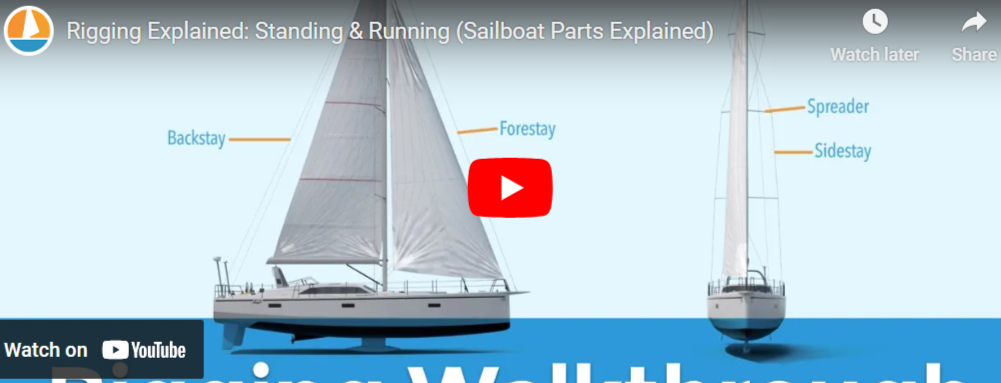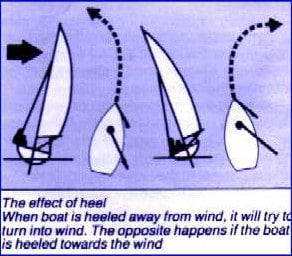Have you ever stood on a sailboat, staring up at the complex weave of cables, wondering about the mystery that distinguishes running rigging from standing rigging? Whether you’re a seasoned sailor or a curious newcomer, understanding the distinction between these two types of rigging is fundamental. It’s not just about knowing what keeps the sails up versus what keeps the mast steady; it’s about grasping the nuts and bolts—or in this case, the ropes and stays—that ensure a smooth and safe voyage.
Understanding Sailing Rigging
Before we differentiate between running and standing rigging, it’s essential to appreciate the broader concept of sailing rigging. Rigging refers to the network of ropes, cables, or chains that support a sailing ship’s masts and sails, allowing a vessel to harness the wind and navigate the waters. This complex machinery is not simply an assembly of parts; it is the sailor’s lifeline.
The Purpose of Rigging
Rigging serves a dual purpose: it stabilizes the vessel’s structures and facilitates sail control. These two functions can be broadly categorized into standing rigging, dedicated to stability, and running rigging, responsible for maneuverability.
Standing Rigging: The Backbone of Stability
Standing rigging is aptly named, as its primary duty is to hold structures, like the mast, firmly in place. Think of it as the strong, silent type—always working hard but rarely conspicuous.
Components of Standing Rigging
Standing rigging consists of fixed lines, cables, and rods that do not move. Critical components include:
- Shrouds: These are lateral supports that prevent the mast from swaying side-to-side.
- Stays: These cables or rods help keep the mast from moving fore and aft.
Materials Used in Standing Rigging
Traditionally, standing rigging was made from natural fibers, but modern yachts have evolved with technology. Today, stainless steel is the standard material due to its durability and resistance to corrosion. Some high-performance racing vessels may use advanced composites like carbon fiber for weight savings and strength.
Importance of Maintaining Standing Rigging
Despite its robustness, standing rigging requires regular inspections. Exposure to the elements can degrade its integrity over time, and a failure in standing rigging can lead to catastrophic consequences. Routine checks can preempt potentially hazardous situations and ensure the safety of everyone aboard.
Running Rigging: The Art of Maneuverability
In contrast to standing rigging, running rigging is dynamic and versatile. It consists of the lines and ropes you adjust during a sail, shaping and controlling the sails to respond to wind changes.
Components of Running Rigging
Running rigging includes a range of elements such as:
- Sheets: Control the angle of the sails relative to the wind.
- Halyards: Raise and lower the sails.
- Vangs, outhauls, and downhauls: Used for tensioning sails and enhancing aerodynamic efficiency.
Materials Used in Running Rigging
Given its need for flexibility and ease of handling, running rigging is often constructed from synthetic materials like Dacron, Dyneema, or Vectran. These modern fibers offer strength, low stretch, and are lightweight—qualities essential for high performance.
Maintenance Tips for Running Rigging
Running rigging lines experience significant wear and tear as they are constantly adjusted. Regularly inspecting for chafe, ensuring blocks and winches are in top condition, and washing the lines in fresh water can extend their life and improve onboard safety.
Key Differences Between Running and Standing Rigging
Having examined the roles and elements of both rigging types, it’s clear they play distinct roles on a sailing vessel. However, a few more nuances differentiate them:
Durability and Maintenance
- Standing Rigging: Designed for endurance, it remains fixed and is typically more susceptible to corrosion than wear. Maintenance is preventative, involving inspections and replacements at significant intervals.
- Running Rigging: Faces constant friction and stress, requiring more frequent replacements and immediate attention to any signs of wear or damage.
Functionality in Sailing
- Standing Rigging: Its role is passive; it supports structural integrity and remains unchanged during a voyage, unless adjusting mast rake or tensioning.
- Running Rigging: Highly active, crucial for trimming and setting sails, its operation is a continuous task, adapting to the sailor’s needs and the demands of the ocean.
Costs and Replacement
- Standing Rigging: Given the materials and complexity, its replacement can be costly but is less frequent.
- Running Rigging: Typically less expensive to replace, but more frequent substitutions are necessary due to its wear rate.
Interaction with Sailors
- Standing Rigging: Limited interaction post-installation, focusing primarily on monitoring.
- Running Rigging: Engages sailors continuously, heavily influencing sailing technique and efficacy.
How to Check for Wear in Rigging
Both types of rigging require vigilance to ensure safety and functionality. Knowing what to look for can make all the difference in maintaining safe sailing conditions.
Standing Rigging Inspection
- Visual Checks: Look for corrosion, rust spots, and broken strands on metal components.
- Stay and Shroud Tension: Regularly check the tension, ensuring there is no slack.
- Fittings and End Sockets: Inspect for any signs of wear or corrosion.
Running Rigging Inspection
- Chafe and Abrasion: Check for any fraying or worn patches on lines and ropes.
- Flexibility and Strength: Ensure each line retains its flexibility and does not feel brittle or weak.
- Pulley and Winch Functionality: Verify smooth operation of all mechanical aids to prevent line snapping.
The Role of Technology in Modern Rigging
As technology advances, rigging systems evolve. Sensors and analytics are becoming more common, providing real-time data on rigging loads and wear. Understanding these technologies can enhance maintenance schedules and improve sailing efficiency.
Digital Innovations
- Load Sensors: Monitor tension and load distribution across the rigging.
- Materials Science: Development of new composites and fibers for increased durability and reduced weight.
- Automated Systems: Innovations allowing for automated sail adjustments, optimizing rigging performance with minimal manual input.
Conclusion
Recognizing the differences between running and standing rigging extends beyond knowing what supports the masts versus what adjusts the sails. It involves understanding the materials, maintenance, functionality, and technological enhancements that define each type. Consider this knowledge a vital component of sailing competence—a key to unlocking both safety and performance as you navigate the waters.
The world of rigging, with its silent strengths and dynamic adaptability, reflects the broader complexities of sailing. It invites you to not only sail but also to appreciate the intricate balance of stability and agility that guides your journey on the open sea. By mastering these nuances, you ensure that your vessel is not just a boat, but a well-orchestrated symphony of engineering and art, poised to respond to the winds’ every whisper.




